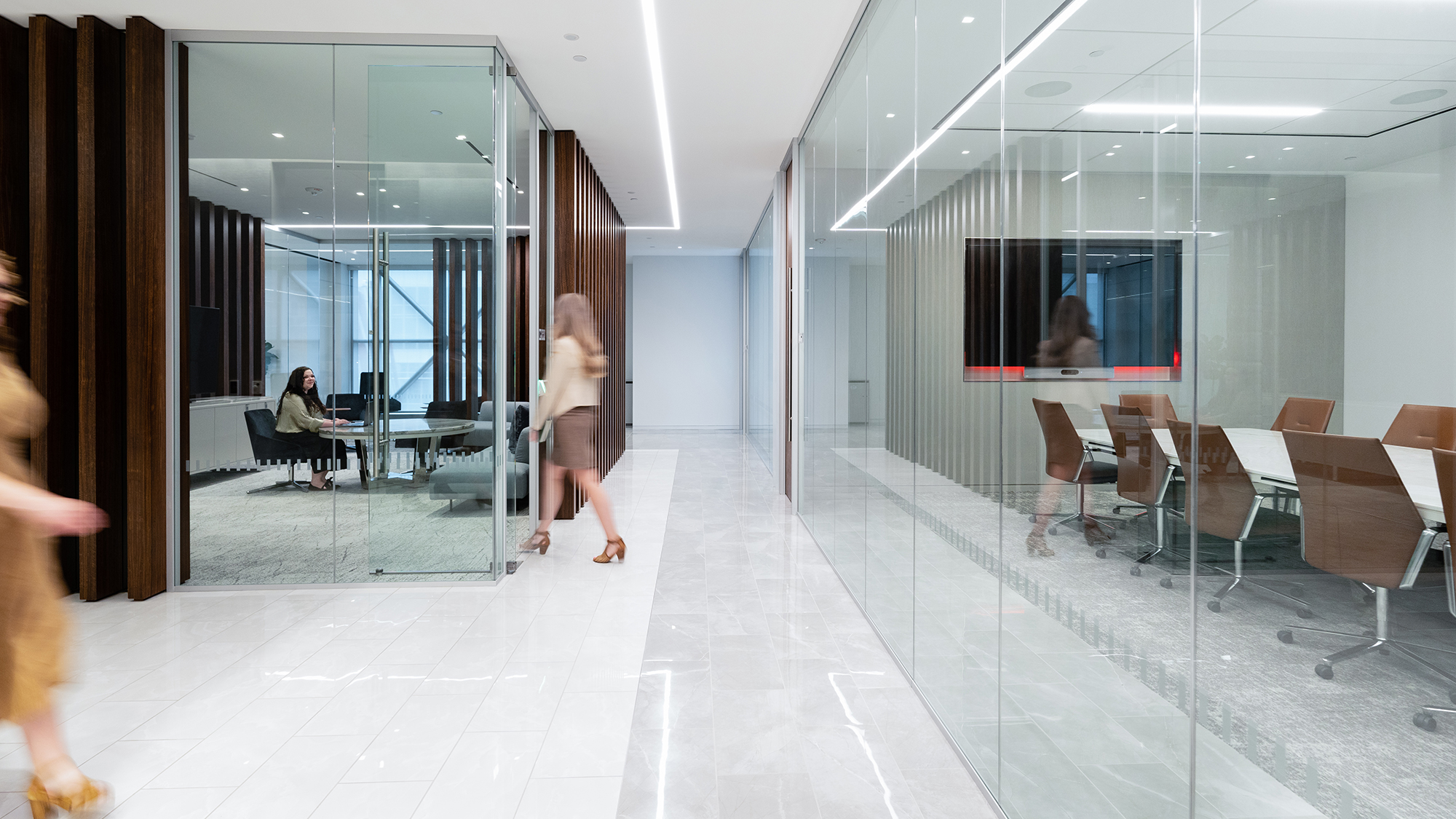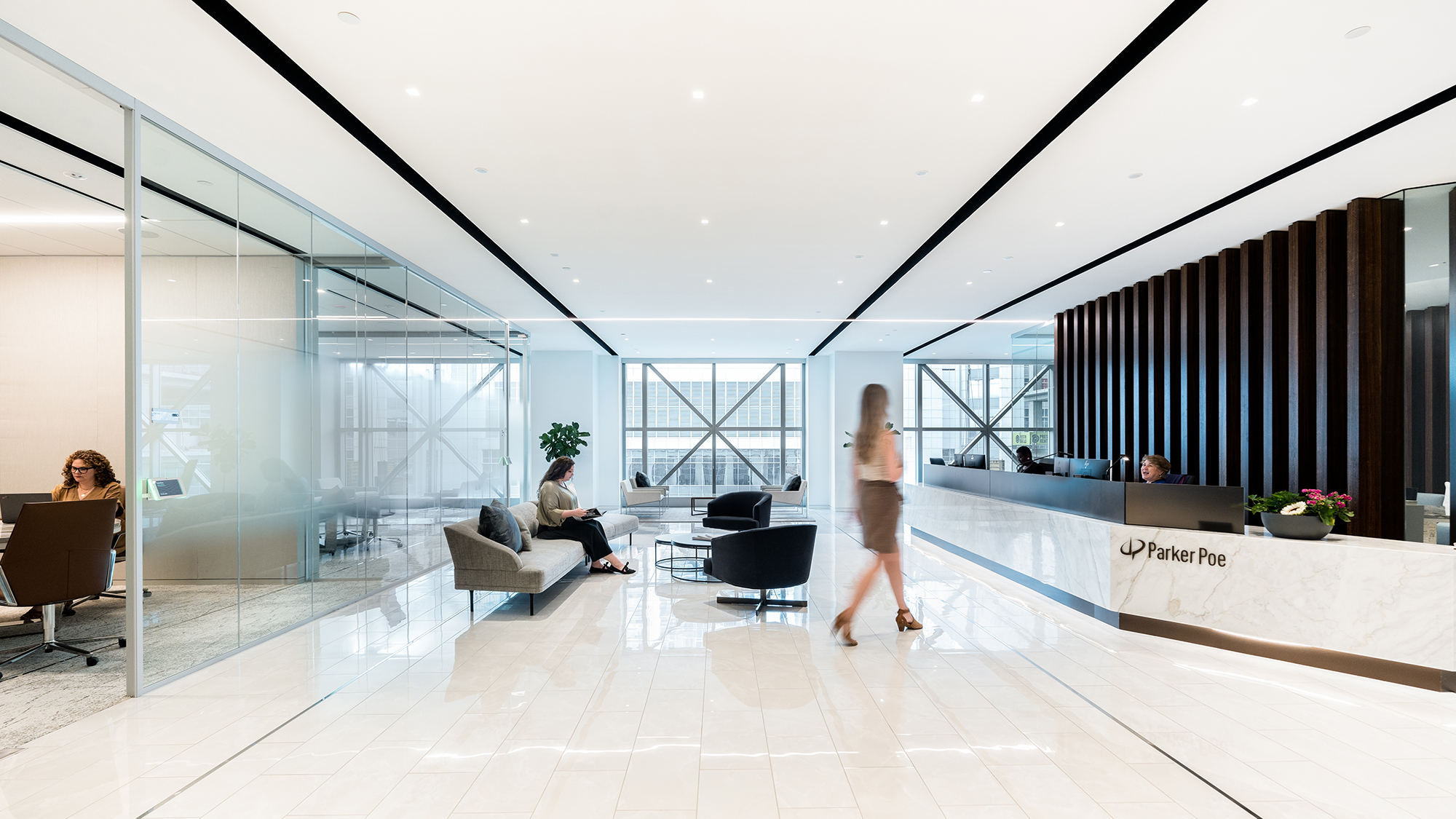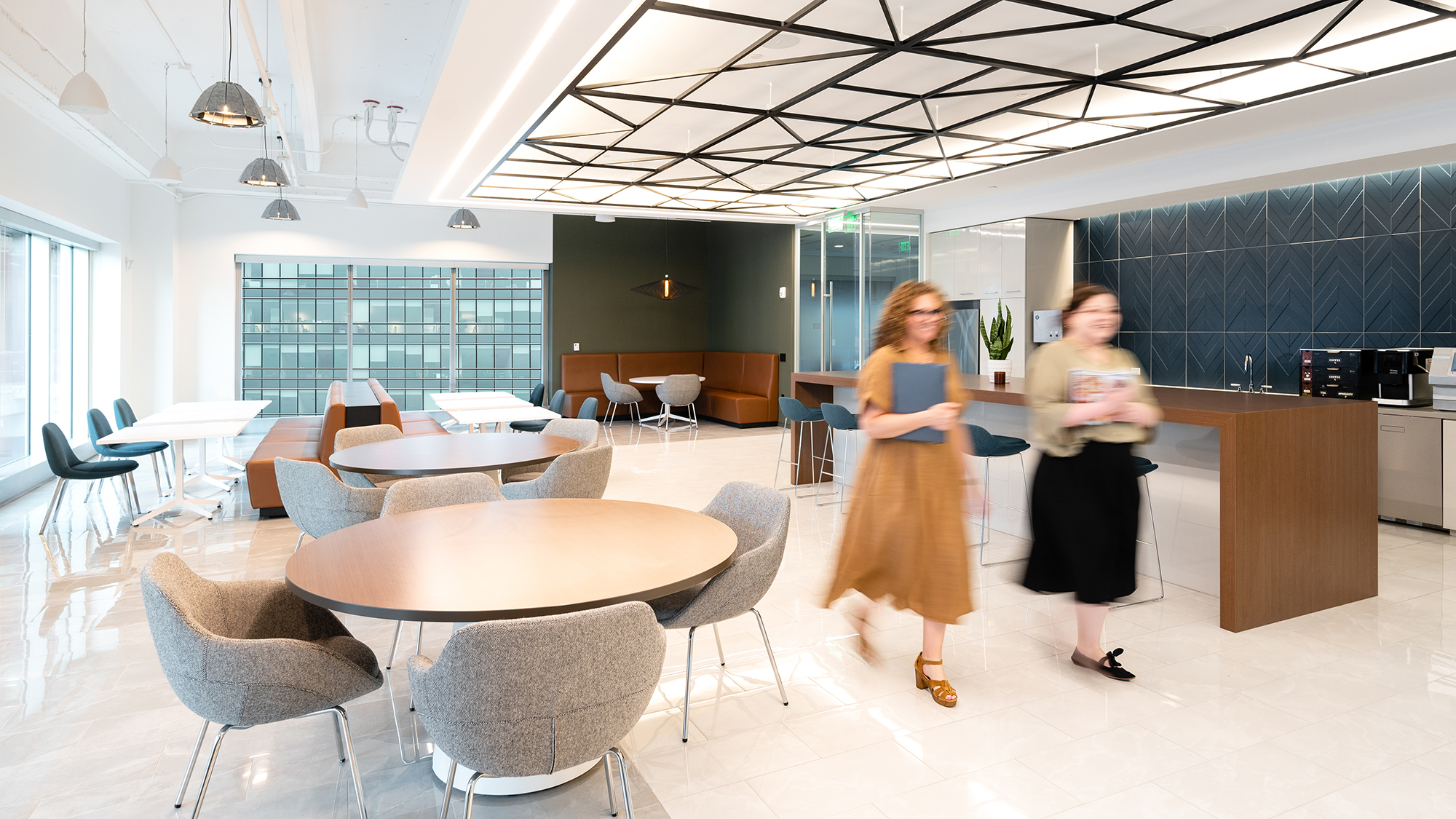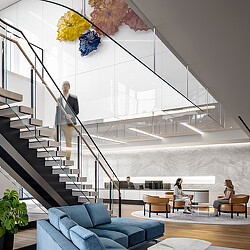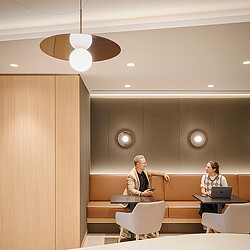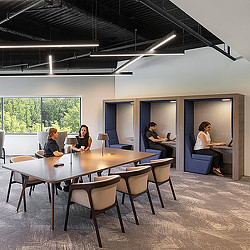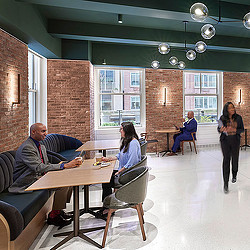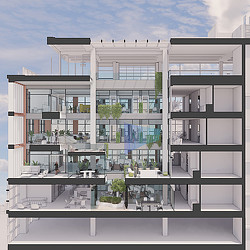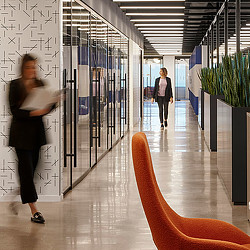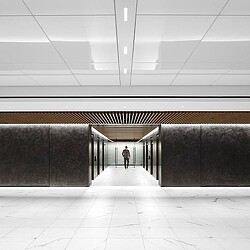How Law Firms in Mid-Tier Markets Are Leading Workplace Innovation
As law firms across the country reimagine the workplace, mid-tier markets are emerging as powerful leaders in this transformation.
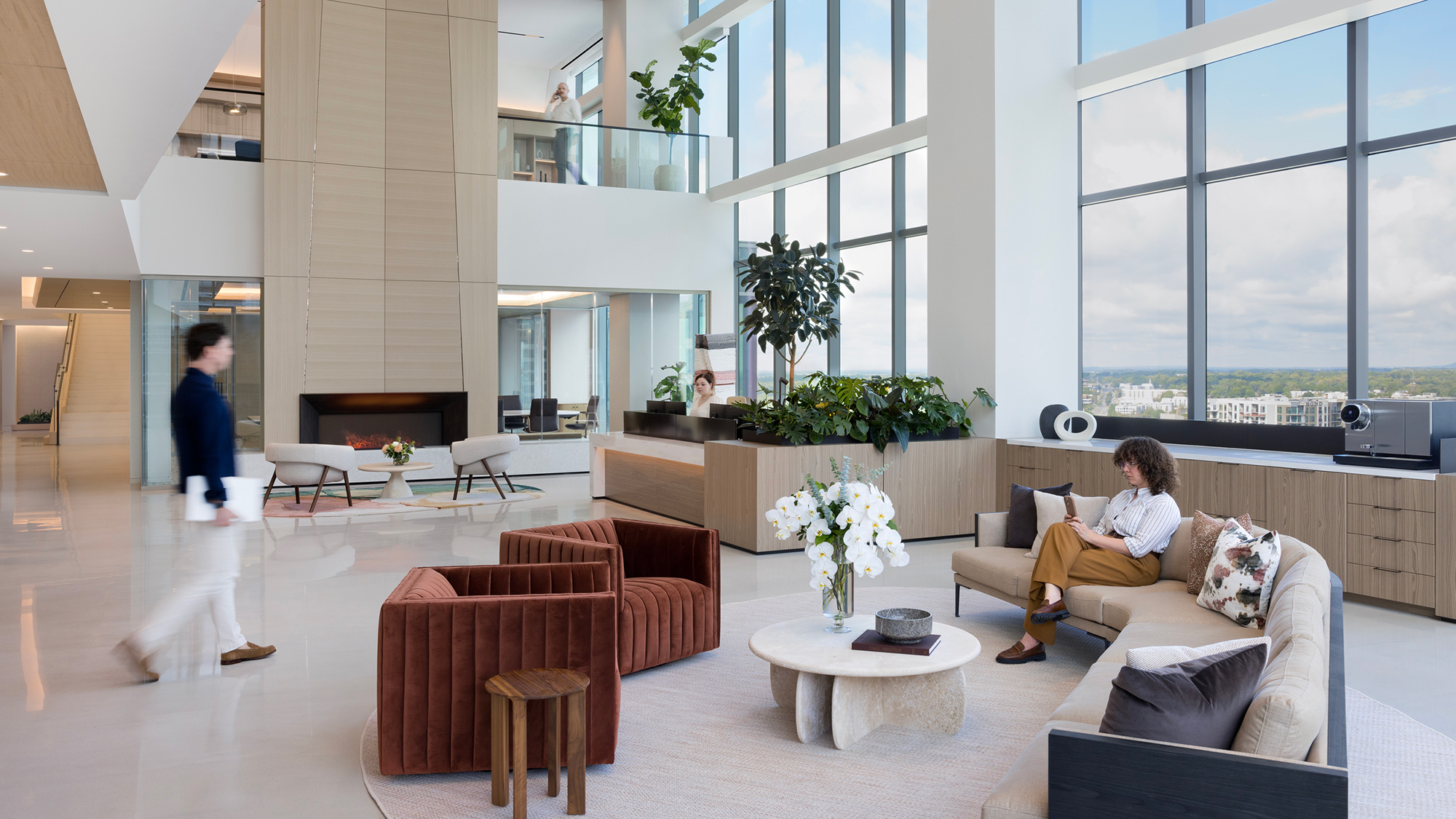
The law firm workplace landscape continues to undergo a remarkable transformation. Gone are the days of rigid hierarchies marked by wood-paneled offices, long corridors adorned with founder portraits, and secretaries stationed outside every partner’s door. While major markets often grab the spotlight, they’re not the only ones driving workplace innovation — and in some cases, they’re still clinging to outdated norms.
As law firms across the country reimagine the workplace, mid-tier markets like Charlotte, North Carolina, are emerging as powerful leaders in this transformation. Rather than following trends set by their big-city counterparts, these markets are shaping the future of legal workplace design through bold, thoughtful choices that prioritize hospitality, flexibility, and collaboration.
Mid-tier markets are uniquely positioned to lead workplace innovation thanks to their agility, future-focused mindset, and openness to change. Unlike major markets, which can be more entrenched in traditional ways of working, mid-tier cities often foster a cultural and business environment that embraces experimentation and new ideas. Their size allows for quicker decision-making and responsiveness to shifting market conditions — an essential advantage in today’s rapidly evolving workplace landscape.
With a focus on growth and a willingness to learn from diverse sources, firms in these markets are capitalizing on opportunities to leapfrog larger, less nimble competitors. They’re proving that meaningful innovation is thriving beyond the big-city strongholds, reshaping how law firms support their people and clients.
Doing More with Less: Rethinking the Legal Footprint
One of the most significant shifts in law firm workplace strategy — particularly in mid-tier markets — is the move toward doing more with less. Law firms are shedding excess square footage while maintaining or even increasing headcount, prioritizing efficiency and flexibility over traditional space hierarchies.
According to Gensler’s U.S. Legal Workplace Survey 2025, only 63% of lawyers choose to work in the office on an average day, compared to 91% in 2016. This demonstrates a fundamental change in how legal professionals engage with their physical workplace. Rather than relying on assigned private offices, many firms are embracing a “me to we” space model, rebalancing their workplaces to support flexibility and collaboration.
Katten Charlotte is a prime example. The firm reduced its footprint by 38%, constructing just 35 offices for 60 attorneys. With a hybrid model of assigned and unassigned spaces, attorneys are empowered to choose how they want to work — with many opting to forgo traditional offices for increased flexibility. Hoteling, shared amenities, and thoughtful space planning allowed Katten to support its workforce while aligning with evolving expectations.
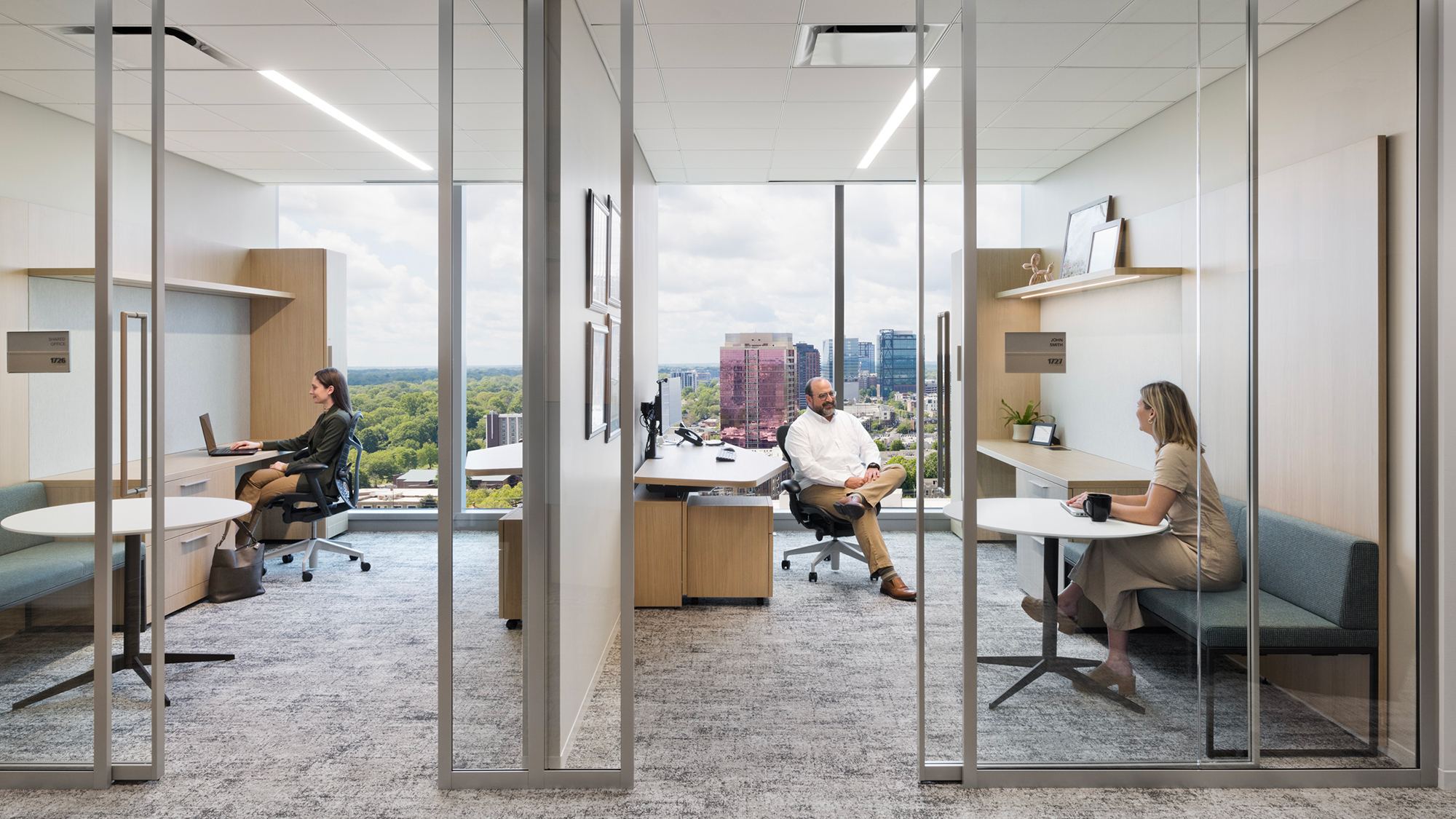
In higher-performing legal workplaces, 80% of lawyers say they feel supported using alternative spaces, and 57% choose to work in areas other than their private workspace regularly.
Some firms are moving away from hierarchical layouts in favor of more equitable, collaborative environments. Parker Poe, for example, placed a number of its single-sized attorney offices along the building’s interior core, allocating the prime perimeter real estate for amenity spaces that foster connection and culture. In a bold move, the firm chose to co-locate its support staff in a daylight-filled, open-office desking environment, rather than relegating these team members to the traditional interior, windowless spaces.
A confidential law firm in Charlotte also chose to lean into interior attorney offices as part of their planning strategy, placing 25% of their glass-front attorney offices along the interior corridor, reinvesting the space saved into innovative spaces for collaboration, casual meeting areas for clients and attorneys, and a welcoming hospitality-driven entry lounge.
Firms making these changes benefit from greater engagement, stronger innovation, and a workplace better aligned with how people want to work today.
Hospitality at the Heart
Another notable shift driving law firm workplace innovation in mid-tier markets is the growing emphasis on creating spaces that support strong cultural connections through meaningful investment in hospitality-focused spaces for clients and employees.
Like many professionals during the pandemic, lawyers spent years working from the comfort of their homes. For employees to return to the office, the workplace must embody a firm’s culture, instill a sense of pride and belonging, and create an environment that justifies the commute.
In response, law firms with offices in secondary markets are purposefully reimagining their workplaces to feel less like traditional offices and more like well-appointed hotels or restaurants. While law firms still require enclosed spaces for heads-down work and confidentiality, common areas are critical for promoting energy, collaboration, and connection. Modern legal workplaces now feature concierge-style welcome lounges, coffee bars, and comfortable client centers that mirror the warm and refined atmosphere of luxury hospitality environments.
This hospitality-first approach benefits lawyers and staff and enhances the overall client experience. At Katten’s Charlotte office, Gensler designed an inviting two-story reception area overlooking the city skyline that the firm aims to use as a client and community event space. Upon arrival, guests are greeted by a fireplace and hearth that spans the full height of the reception zone, serving as the central focal point. The design offers a modern and approachable aesthetic through the casual and comfortable appointments of furniture and finishes. Beverage bars on both floors enhance the hospitality experience for clients and staff.
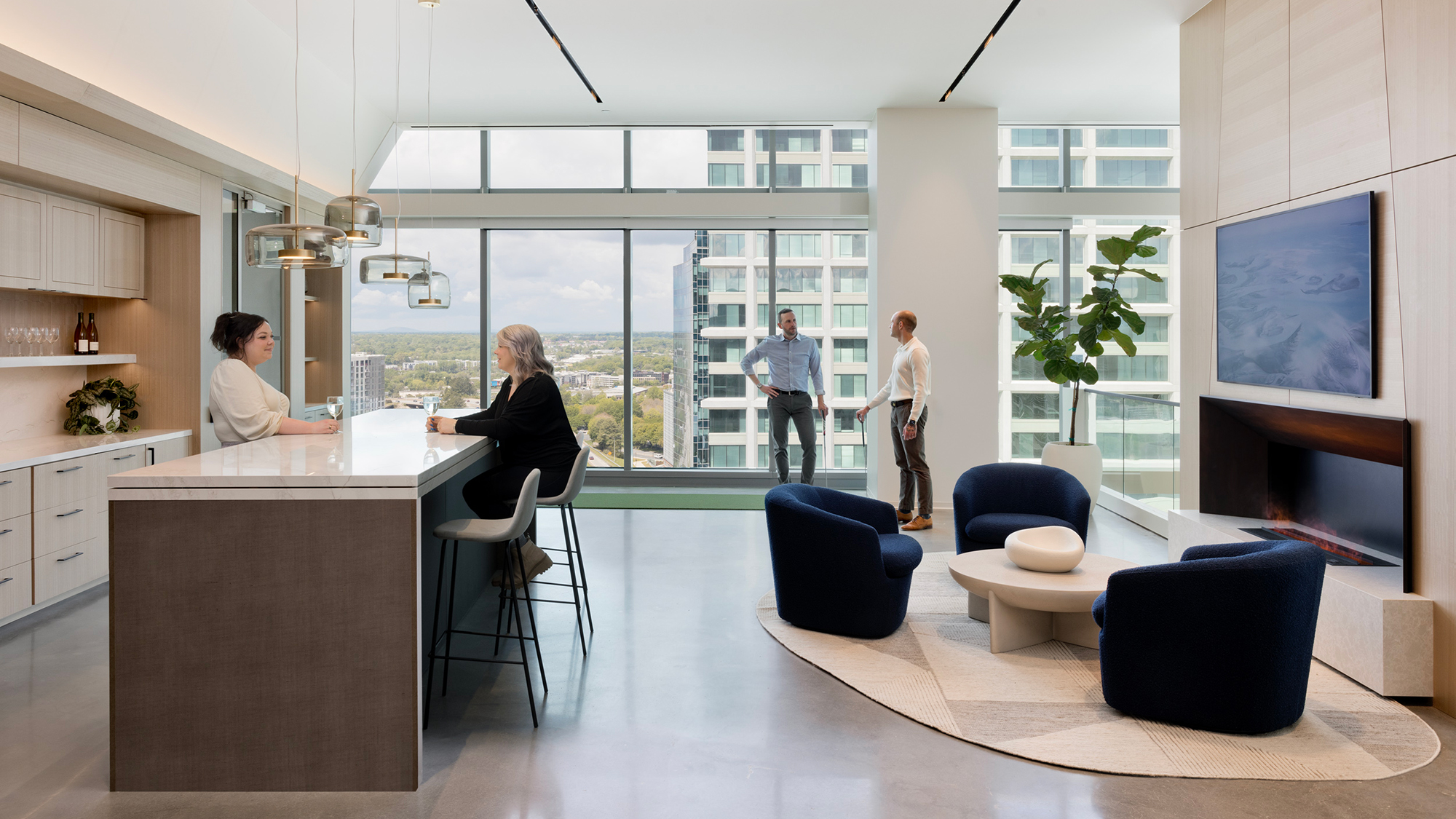
Similarly, another confidential law firm in Charlotte incorporated inviting lighting, warm and reflective materials, and spaces such as welcome lounges for staff and guests to create a space that reflects the firm’s “people-first” ethos. The result is a professional yet dynamic workplace that is client-centered yet restorative — a balance that’s becoming a hallmark of law firm design in mid-tier markets.
Small Moves Make a Big Impact on Culture
Rethinking the legal workplace today goes far beyond maximizing space efficiency — it’s about reimagining how lawyers work, collaborate, and connect. Amenities that were once considered luxuries are now becoming strategic priorities, often taking precedence over traditional features like private offices.
As the nature of legal work evolves, so do attorneys’ needs and expectations. According to our U.S. Legal Workplace Survey 2025, lawyers spend significantly less time working alone — dropping from 62% in 2013 to just 41% in 2025 — and are engaging more in learning and socializing. This shift reflects a growing desire for social connection and a more interactive, team-oriented workplace.
Strategic space planning also plays a key role in creating opportunities for mentorship. Today’s legal professionals place high value on meaningful, in-person connections, often sparked in dynamic, shared environments that naturally support knowledge exchange.
Thoughtful, often understated design interventions, such as interconnecting staircases that encourage casual, spontaneous interaction, are one way to achieve this connection. A well-designed stair can become a social anchor — a place where people pause, greet colleagues, or get a quick glimpse of activity across floors. It energizes the environment in subtle but powerful ways, while inviting movement and shared experience.
For one confidential law firm in Charlotte, our team reimagined an existing interconnecting staircase into something bespoke. Working within the constraints of the original steel framework, we introduced a soft, curved base to open the stairs into the surrounding space and create a visual moment of arrival. Surrounded by a comfortable employee lounge and pantry, the reworked stairs have become a hub for informal meetings, coffee chats, and moments of downtime.
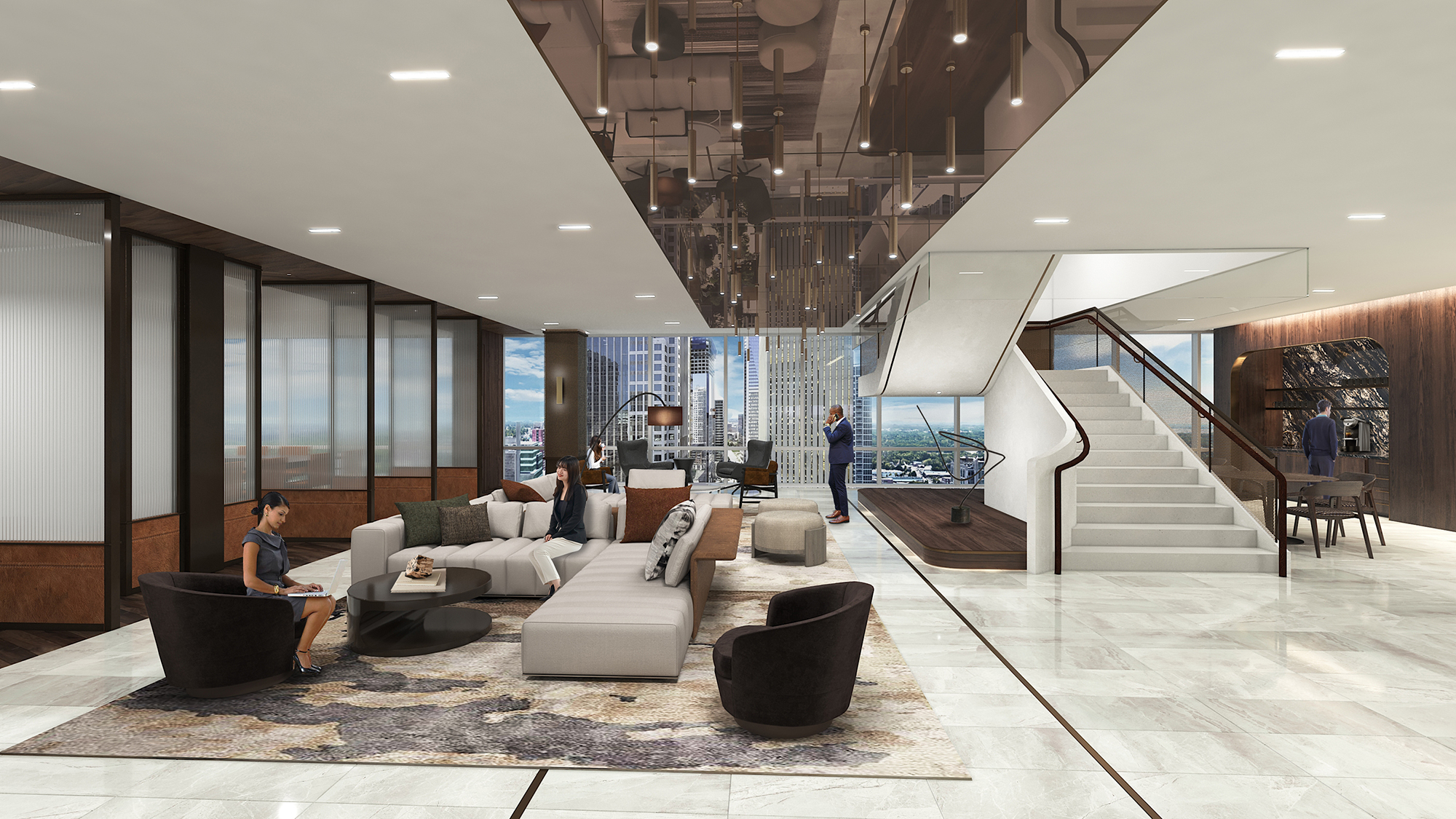
This is just one example of how law firms are embracing design as a tool for fostering culture, connection, and community — proving that even small interventions can spark big shifts in how people feel and work.
Mid-tier markets like Charlotte are leading the charge toward a more collaborative, hospitality-inspired, and inclusive law office experience. From scaled-down footprints and amenity-rich environments to intentional moments of connection, these firms in mid-tier markets are redefining what a modern legal workplace looks and feels like. In doing so, they’re not only meeting the evolving needs of lawyers and clients — they’re setting a new industry standard.
For media inquiries, email .
